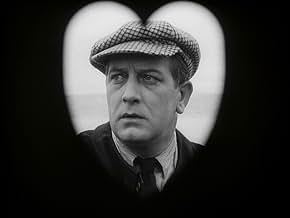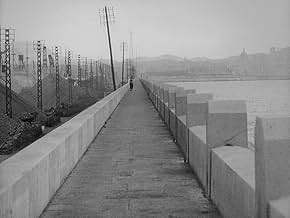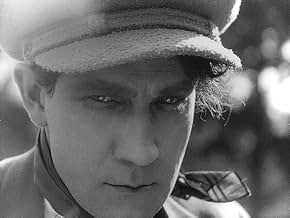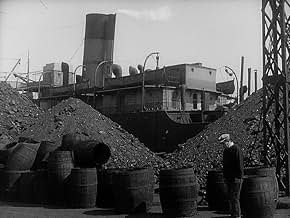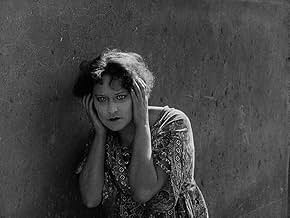Coeur fidèle
- 1923
- Tous publics
- 1h 27m
Marie wants to escape from her job and also from her lover, Paul, an unemployed drunk. She dreams of going off with Jean, a dockworker. The two men quarrel and fight over Marie on two occasi... Read allMarie wants to escape from her job and also from her lover, Paul, an unemployed drunk. She dreams of going off with Jean, a dockworker. The two men quarrel and fight over Marie on two occasions, but Paul retains a hold over her. Marie has a baby who falls ill and as time goes on ... Read allMarie wants to escape from her job and also from her lover, Paul, an unemployed drunk. She dreams of going off with Jean, a dockworker. The two men quarrel and fight over Marie on two occasions, but Paul retains a hold over her. Marie has a baby who falls ill and as time goes on Jean and a crippled neighbor try to help the child. Paul nearly causes the death of the ch... Read all
- Director
- Writers
- All cast & crew
- Production, box office & more at IMDbPro
Featured reviews
The cast give fabulously adept performances capturing the strong emotions of the tableau, and ably passing on the same airs to the audience. Edmond Van Daële is unexpectedly unsettling as antagonistic Petit Paul, while the conflicting feelings of love, sadness, and determination weighing on Jean are given vivid life by Léon Mathot. I dare say Gina Manès rather outshines the both of them, inhabiting beleaguered Marie with a haunted expression and comportment that tugs fiercely on one's heartstrings. Not to count out any other part of these 87 minutes, but it's hard not to be especially impressed with the carnival sequence in the first half. I say this in part recognizing the power of the acting, but especially in light of the exquisite editing that helps this to be an a tremendous example early in the medium's history of scenes of merriment utilized to spotlight and indeed amplify a predominant dark mood. It can't be overstated what brilliance this scene demonstrates, which naturally reflects superbly on Epstein - and even at that, no part of the whole is truly any lesser.
The tale is just as engrossing in the second half as it turns even more dour, and the strength of every contribution remains just as vibrant. I can only repeat that the cast is great; as both director, and co-writing with his wife Marie (also capably co-starring in a smaller but pivotal supporting role), Epstein orchestrates shots and scenes - ever taking utmost advantage of those techniques noted above - that ensures every ponderous beat of the drama lands with all the force and impact that it can and should. Meanwhile, even the hair, makeup, and costume design lend considerably to the severity of the atmosphere, let alone the production design, art direction, and filming locations. Illustrating such round excellence, a moment in which Jean simply climbs a flight of stairs shows a level of care, ingenuity, and expertise that's plainly gratifying (as if anything herein did not provide ample like illustration). From top to bottom 'Coeur fidèle' is rather terrifically well made, and extra smart about every choice in its craftsmanship. Not least considering how magnificently well the title has been preserved in the past 100 years, frankly what ultimately comes across is that this matches or surpasses many of its contemporaries in every capacity, with outstanding detail in every way.
Before I sat to watch I surely expected that I'd enjoy this; I love silent movies. Still I'm downright enchanted with how stupendous it all is. Exceptional writing, direction, editing, camerawork, and acting, and all the fine work of those behind the scenes, result in an immensely absorbing drama that is much more than what it seems from the outside looking in. Every constituent element in and of itself makes this 1923 feature worth watching; taken all together, the sum total is exemplary. I can understand why early cinema doesn't appeal to all viewers, and I'd have said the same of myself at one time. 'Coeur fidèle' boasts a striking vitality, however, that far outshines whatever issues one might perceive with the standards of the time. Truthfully, it's even better than I could have hoped; from the unassuming beginning through to the suspenseful climax and a balanced, surprisingly thoughtful ending, I'm quite of the mind that this is outright masterful for its exhibition of film-making and story-telling prowess. It might take a bit of work to find this to watch, but if you're a fan of the silent era, this is more than worth the effort.
The audacity of Epstein, very influenced by cubism and surrealism, takes us from a very banal story to a breathtaking intellectual adventure.
Epstein's script was probably inspired by the novelists from the nineteenth century,probably Victor Hugo and Emile Zola.Marie is nobody's child:she was brought up by a shrew and her husband who never showed some affection to her:she is akin to Cosette or Fantine in "les Miserables ".Petit Paul seems to come from Zola's "L'Assommoir" the seventh volume in the Rougon-Macquart saga.
Marie and Jean are unfortunate lovers ;Jean is a good man,in the noblest
sense of the word .Epstein's closest relative in the cinema field is Frank Borzage in "Coeur Fidele",with whom he shares the same fascination for the fair and the merry-go-rounds (see "little man what now?") Like Abel Gance ,Epstein was a pioneer: the scene on the fairground has a sense of madness which makes the viewer dizzy ;it predates Hitchcock's experimentations in "Strangers on a train" by thirty years.For that scene alone,the movie would be essential viewing;with the addition of another extraordinary scene when the crippled girl,whose crutch has been crushed by a car crawls all along the way to save her friends,it becomes a major twenties French classic.
Coeur fidele is a contemporary romance whose poetry of the waterfront combines a sordid realism with a stunning visual lyricism- the film is early evidence of Jean Epstein's concern with exploring the expressive possibilities of the cinema. Instead of developing the story conventionally through dramatic confrontations... Epstein emphasizes simple patterns of rhetorical figuring and several ambiguous sequences of privileged subjectivity. In addition, Coeur fidele makes use of an astounding and memorable close-up of it's protagonists staring hauntingly through a window. Gina Manes face (as she looks out of the dirty bistro window)- in a stunning and beautiful image that seems to hover over the narrative itself- that floats over the water of the squalid, dismal harbor.
As previously mentioned, Coeur fidele is a love story in which Marie Epstein plays a minor but significant role as the crippled neighbor of the heroine. As the lovers are reunited (enabled by Marie's shooting of the villainous and drunken husband), the heroine's sick child remains in the dingy apartment as Mademoiselle Marice, dazed by her violently provoked action, cradles the infant on the wooden stairs. There are the last images of Marie, inter-cut with shots on the happy couple on the carnival ride that had been the scene of their separation.
The merry-go-round sequence in Coeur fidele has become an accepted "classic" of cinematic impressionism, as many viewers were (and are) greatly impressed by the striking sequence set on the merry-go-round, on which the heroine rides while in a state of extreme mental agitation. Epstein, inspired by Abel Gance's La Roue, experimented in this scene with the editing of very short bits of film in regular, rhythmic patterns. This section of rapid montage and camera movement has been called by Rene Clair "visual intoxication."
Did you know
- TriviaThe director of the film, Jean Epstein said he chose to film a simple story of love and violence "to win the confidence of those, still so numerous, who believe that only the lowest melodrama can interest the public", and also in the hope of creating "a melodrama so stripped of all the conventions ordinarily attached to the genre, so sober, so simple, that it might approach the nobility and excellence of tragedy."
- ConnectionsFeatured in Trente ans de silence: Gina Manès (1965)
- How long is The Faithful Heart?Powered by Alexa
Details
- Runtime1 hour 27 minutes
- Color
- Sound mix
- Aspect ratio
- 1.33 : 1
Contribute to this page



